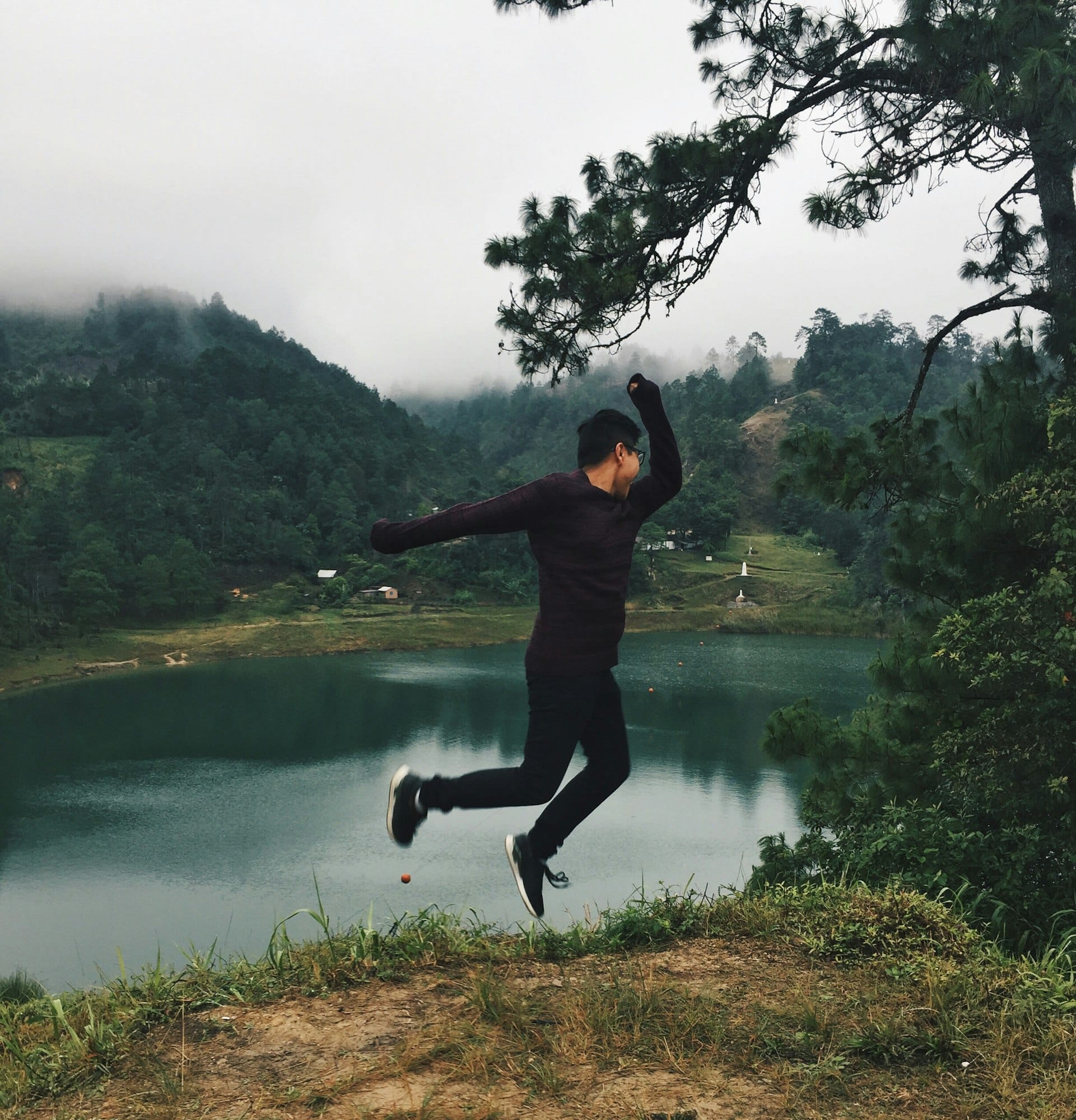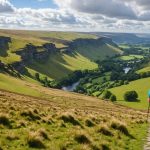Planning a multi-day kayaking and camping adventure in the UK is both thrilling and rewarding. With stunning coastlines, serene lakes, and lush landscapes, you'll find your perfect escape. This guide provides essential tips on route selection, gear essentials, and safety measures, ensuring your journey is smooth and enjoyable. Whether you're a seasoned paddler or a beginner, get ready to immerse yourself in nature and create unforgettable memories. Prepare for your epic adventure today!
Overview of Multi-Day Kayaking and Camping in the UK
Embarking on a multi-day kayaking and camping adventure in the UK offers a unique blend of exploration and tranquillity. These trips allow enthusiasts to immerse themselves in nature, paddling through stunning waterways and resting under starry skies. The benefits of multi-day kayaking include not only the physical challenge but also the opportunity to disconnect from the digital world and reconnect with the natural environment.
This might interest you : Discover Unique Farm Stays: A Guide to Finding Campsites with Authentic Agricultural Experiences in the UK
The UK boasts a variety of popular kayaking destinations that cater to all skill levels. The Scottish Highlands, with its rugged landscapes and serene lochs, provide a breathtaking backdrop for any kayaking journey. In Wales, the River Wye offers gentle currents and picturesque views, ideal for those new to the adventure. For a more challenging experience, the coastlines of Cornwall present thrilling sea kayaking opportunities.
When planning a camping adventure alongside kayaking, certain essentials are crucial. A reliable tent, waterproof gear, and a portable cooking stove are must-haves to ensure comfort and safety. It's also important to pack lightweight, non-perishable food items and a first-aid kit. Being well-prepared enhances the experience, allowing adventurers to focus on the beauty and excitement of their journey.
This might interest you : Ultimate Guide to Summer Camping Adventures in the UK: Preparation Tips and Tricks
Step-by-Step Trip Planning Guide
Planning a multi-day kayaking adventure requires careful consideration to ensure a seamless experience. Start by determining your trip duration and goals. Consider how many days you wish to spend on the water and what you aim to achieve, whether it's relaxation, exploration, or skill-building.
Next, research potential routes. The UK offers diverse waterways, each with unique landscapes and challenges. Look into local regulations, as some areas may require permits or have restrictions on camping. This ensures compliance and safety during your journey.
Once you've gathered essential information, it's time to create a flexible itinerary. While it's important to have a plan, flexibility allows for spontaneous exploration and adaptation to weather changes. Prioritize key locations and allocate time for rest and unforeseen circumstances. This approach balances structure with the freedom to enjoy the adventure fully.
Incorporate rest days to recuperate, especially if tackling demanding routes. Planning for contingencies, such as alternative campsites or exit points, enhances safety. A well-thought-out itinerary maximizes enjoyment and minimizes stress, allowing you to focus on the thrill of kayaking and the serenity of nature.
Essential Gear and Equipment
Embarking on a multi-day kayaking and camping adventure necessitates thorough preparation and the right essential equipment. A well-curated kayaking gear checklist ensures both safety and enjoyment. Begin with selecting a suitable kayak, considering factors such as stability, storage capacity, and weight. Pair your kayak with reliable paddles, opting for lightweight materials that enhance endurance during long trips.
Safety gear is paramount. A personal flotation device (PFD) is non-negotiable, providing crucial buoyancy in emergencies. A whistle and a waterproof map case are also advisable, facilitating navigation and communication.
When it comes to camping equipment, a durable tent capable of withstanding various weather conditions is essential. Choose a sleeping bag appropriate for the season, ensuring warmth and comfort during chilly nights. A portable cooking stove is indispensable for preparing meals, along with lightweight cookware.
Investing in quality gear is a wise decision. Look for reputable brands and read reviews to gauge reliability and performance. While it may be tempting to cut costs, durable equipment often proves more economical in the long run. Prioritizing quality ensures a safer and more enjoyable adventure, allowing you to focus on the beauty of nature rather than equipment failures.
Recommended Kayaking Routes
Exploring the UK waterways offers an array of scenic kayaking routes, each with its own allure. In England, the River Thames provides a gentle yet captivating journey through historical landscapes, offering glimpses of iconic landmarks. For those seeking a more serene experience, the Norfolk Broads present a tranquil escape with its network of rivers and lakes, ideal for leisurely paddling.
Scotland boasts some of the most dramatic kayaking routes. The Sound of Arisaig, with its crystal-clear waters and diverse marine life, is a must-visit for nature enthusiasts. Meanwhile, the Caledonian Canal offers a unique blend of freshwater lochs and man-made canals, surrounded by stunning Highland scenery.
In Wales, the Pembrokeshire Coast is renowned for its rugged cliffs and hidden coves, perfect for adventurous sea kayaking. The River Wye, with its gentle currents, is ideal for beginners, offering picturesque views and abundant wildlife.
When navigating these diverse waterways, consider the varying water conditions. Tips for navigating include checking weather forecasts, understanding tidal patterns, and ensuring your gear is suitable for both calm and challenging waters. Being prepared enhances safety and allows you to fully appreciate the beauty of the UK's kayaking routes.
Ideal Camping Sites Along Kayaking Routes
When planning a kayak camping trip in the UK, selecting the right camping sites is crucial to enhancing your adventure. The UK offers a range of camping sites near popular kayaking routes, each providing unique experiences and facilities.
In the Scottish Highlands, Loch Lomond is a favourite for its stunning views and well-equipped campsites, such as Cashel Camping in Rowardennan, offering essential amenities like showers and toilets. For those exploring the River Wye, the Lucksall Caravan and Camping Park provides a comfortable base with its extensive facilities, including electric hook-ups and a café.
When considering wild camping versus established sites, it's important to weigh the benefits. Wild camping offers solitude and a closer connection to nature but requires self-sufficiency and adherence to local regulations. Established sites, on the other hand, provide conveniences like running water and waste disposal, which can be beneficial after a long day of paddling.
Look for campsites that offer amenities such as secure kayak storage, proximity to launch points, and easy access to hiking trails for off-water exploration. Choosing the right campsite can greatly enhance your kayak camping experience, allowing you to rest and recharge amidst the UK's beautiful landscapes.
Safety Guidelines and Best Practices
Embarking on a kayaking and camping adventure requires adherence to essential safety guidelines to ensure a secure and enjoyable experience. Prioritizing kayaking safety begins with equipping yourself with the right gear. A personal flotation device (PFD) is indispensable, providing buoyancy in emergencies. Additionally, carry a whistle and a waterproof map to assist in navigation and communication.
Understanding weather conditions is crucial. Always check forecasts before setting out and be prepared for sudden changes. Familiarize yourself with water safety practices, such as recognizing currents and tides, to avoid hazardous situations.
When it comes to camping safety, setting up camp away from water edges and under stable trees mitigates risks. Store food securely to prevent attracting wildlife, and know how to respond to encounters.
Emergency preparedness is vital. Carry a first-aid kit and know basic first-aid procedures. Inform someone of your itinerary and expected return time. In case of emergencies, having a plan and communication means, such as a mobile phone or a satellite device, is essential.
By following these safety guidelines, you enhance your adventure's safety, allowing you to focus on the thrill of kayaking and the serenity of camping.
Expert Tips for Successful Trips
Embarking on a multi-day kayaking and camping adventure can be both exhilarating and challenging. Here are some expert tips to enhance your experience:
Insights from Seasoned Kayakers and Campers
Experienced adventurers emphasize the importance of planning and preparation. Always conduct a thorough gear check before departure. Ensure your equipment is in good condition and suitable for the specific conditions of your trip. Seasoned kayakers recommend practicing loading and unloading your kayak efficiently, as this can save time and energy during your journey.
Common Pitfalls to Avoid
One common mistake is underestimating the weather. Always check forecasts and be prepared for sudden changes. Overpacking is another pitfall; focus on essentials to avoid unnecessary weight. Additionally, neglecting to secure your kayak properly can lead to mishaps. Ensure your kayak is securely fastened when not in use.
Importance of Group Dynamics and Communication
Effective communication is crucial, especially in group settings. Establish clear signals and protocols for emergencies and routine stops. Understanding each member's strengths and limitations fosters a supportive environment. Encourage open dialogue to address concerns and adapt plans as needed. This enhances safety and ensures a harmonious adventure.
Itinerary Suggestions for Varied Experience Levels
Planning a multi-day kayaking trip requires tailoring your itinerary to match your skill level, ensuring a balance between paddling and relaxation. For beginners, consider starting with the River Wye. This route offers gentle currents and picturesque landscapes, perfect for building confidence. A typical itinerary might include paddling for a few hours each day, with ample time for breaks and exploring nearby trails.
For those with more experience, the Scottish Highlands present a more challenging adventure. An itinerary could involve navigating the Caledonian Canal, combining long paddling stretches with scenic camping spots. Here, advanced paddlers can enjoy the thrill of varied water conditions while still having moments to unwind and appreciate the surroundings.
Customizing your itinerary allows you to cater to personal preferences and skill levels. Beginners may prefer shorter paddling days with more frequent stops, while advanced paddlers might seek longer routes with fewer interruptions.
Balancing paddling and relaxation time is crucial for an enjoyable trip. Ensure your itinerary includes rest days or lighter paddling sessions to prevent fatigue. This approach not only enhances safety but also allows you to fully immerse yourself in the natural beauty of the UK's waterways.
Resources and Local Regulations
Understanding local regulations is crucial for a seamless kayaking and camping experience in the UK. Regulations vary by region, so it's essential to research specific rules for each area you plan to visit. For instance, some waterways may require permits, while others have restrictions on camping locations. Adhering to these guidelines ensures both safety and environmental protection.
Kayaking Resources
Local kayaking resources are invaluable for trip planning. Many regions have dedicated kayaking clubs and organizations that offer insights and support. These clubs often provide information on the best routes, safety tips, and equipment rentals. Engaging with local clubs can also connect you with experienced kayakers who can offer advice and share their experiences.
Camping Regulations
When it comes to camping regulations, it's important to know the rules regarding wild camping versus established campsites. Wild camping is generally more restricted and requires adherence to Leave No Trace principles. Established campsites, however, offer more amenities and are often conveniently located near popular kayaking routes.
For further research and planning, consider consulting resources such as the British Canoeing website or local tourism boards. These platforms offer comprehensive guides and updates on current regulations, helping you prepare thoroughly for your adventure.
Visual Aids and Maps
Navigating kayaking routes in the UK requires effective use of maps and visual aids. These tools are essential for planning and ensuring a safe and enjoyable adventure. Maps provide detailed insights into waterways, helping paddlers understand the terrain, identify potential hazards, and plan rest stops. They are crucial for both beginners and seasoned adventurers, allowing for precise navigation and route adjustments as needed.
When selecting map resources for UK waterways, consider options like Ordnance Survey maps, which offer comprehensive coverage of the region's landscapes. These maps are invaluable for understanding the topography and identifying key features along your route. Additionally, digital maps and apps can provide real-time updates on weather conditions and water levels, enhancing safety and preparedness.
Incorporating visual aids into your trip planning process can significantly improve your kayaking experience. Use them to mark important waypoints, identify scenic spots, and plan your daily itinerary. Visual aids such as route sketches or annotated maps can also serve as quick references during your journey, aiding in navigation without the need for constant map consultation. By leveraging these tools, you ensure a well-organized and enjoyable kayaking adventure.















